Turn Kitchen Waste into a Never-Ending Harvest
Have you ever tossed vegetable scraps into the trash or compost and wondered if they could be put to better use? Good news—they absolutely can! In fact, many common vegetables can be regrown from kitchen scraps, giving you free food, reducing waste, and adding a bit of magic to your kitchen or garden.
Whether you’re a seasoned gardener or a curious beginner, regrowing vegetables from scraps is a fun, low-cost, and sustainable way to enjoy fresh produce year-round. Most of these methods require nothing more than a glass of water, a sunny window, and a little patience.
In this article, we’ll explore 9 popular vegetables you can regrow from scraps, how to regrow them step-by-step, and some pro tips to help you succeed.
Why Regrow Vegetables from Scraps?
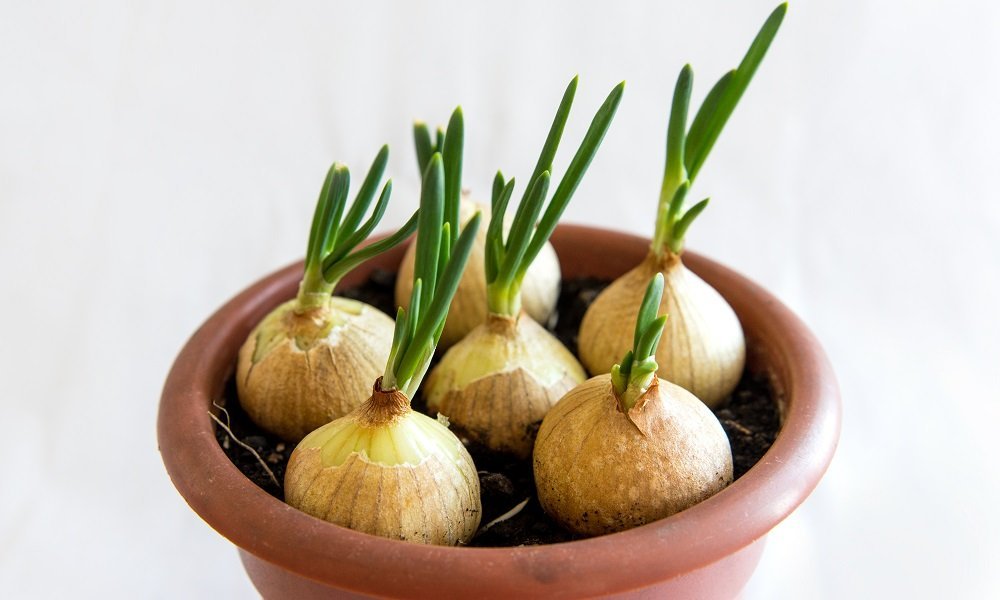
- Free food from what you’d normally throw away
- No garden required—many scraps grow well indoors
- Eco-friendly and reduces kitchen waste
- Great way to introduce kids to gardening
- You’ll always have fresh ingredients on hand
Let’s dive into the top 9 vegetables you can regrow easily at home!
1. Green Onions (Scallions)
Why They’re Perfect to Regrow
Green onions are one of the easiest vegetables to regrow. They grow fast and require minimal care.
How to Regrow:
- Cut the green tops, leaving about 1–2 inches of the white root base.
- Place the root ends upright in a glass with a small amount of water (just enough to cover the roots).
- Put the glass on a sunny windowsill.
- Change the water every 2–3 days.
New shoots will appear in just 3–5 days, and you can trim and regrow them again and again.
Tip:
Once they’ve regrown a few times, plant them in soil to prolong their life.
2. Lettuce (Romaine & Leaf Varieties)
Why It’s Great to Regrow
Lettuce regrows quickly from the leftover base and makes a perfect indoor countertop crop.
How to Regrow:
- Cut off the leaves, leaving about 2 inches of the base intact.
- Place the base in a shallow bowl with water (cut side up).
- Keep it in a sunny window and change the water every 2 days.
- New leaves will begin to sprout from the center within a week.
You won’t regrow a full head, but you’ll get enough tender leaves for sandwiches or salads.
Tip:
Transplant to soil after 10–14 days for stronger growth.
3. Celery
Why It’s a Top Pick
Celery regrows easily and produces crisp new stalks with minimal effort.
How to Regrow:
- Cut off the stalks, leaving about 2 inches of the base.
- Place the base in a bowl with a little water (cut side up).
- Put the bowl on a bright windowsill or under grow lights.
- Replace the water every 2–3 days.
In a week, new leaves and small stalks will begin to grow from the center.
Tip:
After about 2 weeks, transplant the celery to soil for better results and larger regrowth.
4. Garlic
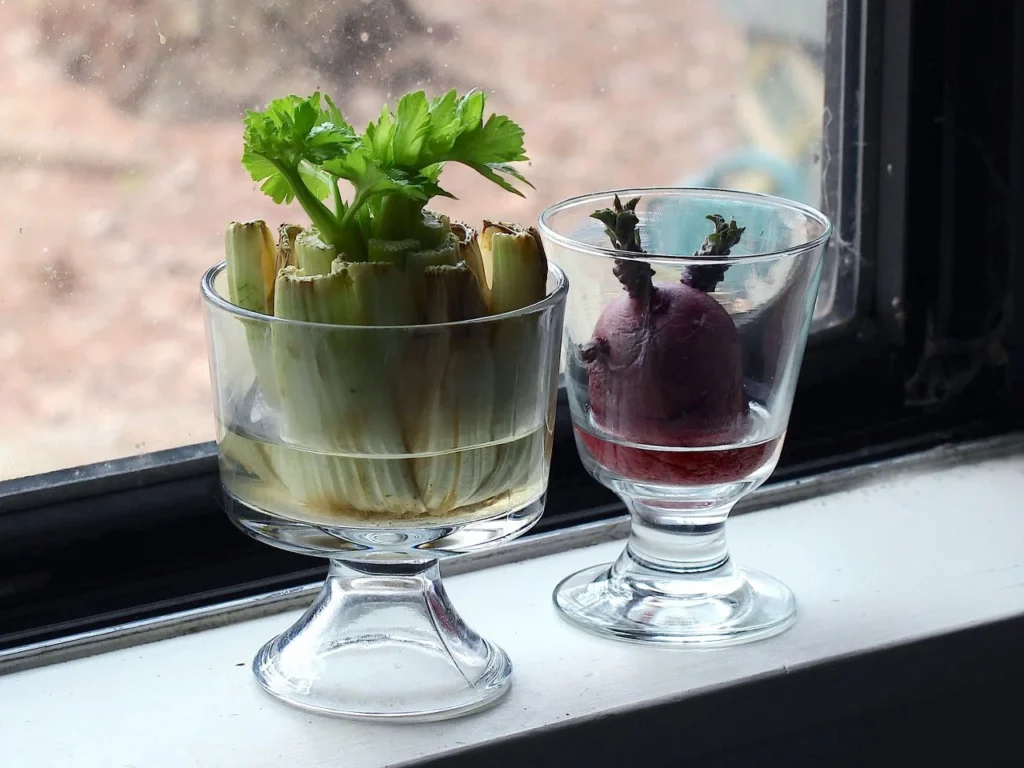
Why It’s a Kitchen Essential
Garlic cloves can sprout into new bulbs or green garlic shoots.
How to Regrow:
- Take a garlic clove (preferably one that has started sprouting).
- Plant it in soil about 2 inches deep with the pointy end up.
- Water regularly and keep in a sunny spot.
In a few weeks, you’ll get green garlic shoots (like scallions) and eventually a whole bulb if grown outdoors or in a deep pot.
Tip:
Green garlic shoots have a mild flavor and can be used like chives or scallions.
5. Carrot Tops
Why They’re Worth Trying
While you can’t regrow a full carrot root, you can regrow the leafy tops, which are edible and nutritious.
How to Regrow:
- Cut off the top 1 inch of the carrot (with some of the orange part).
- Place it cut-side down in a shallow dish with water.
- Put it in a sunny spot and change water every 2 days.
The tops will sprout feathery greens that are great in salads, soups, or as garnishes.
Tip:
Try using the greens to make carrot top pesto!
6. Potatoes
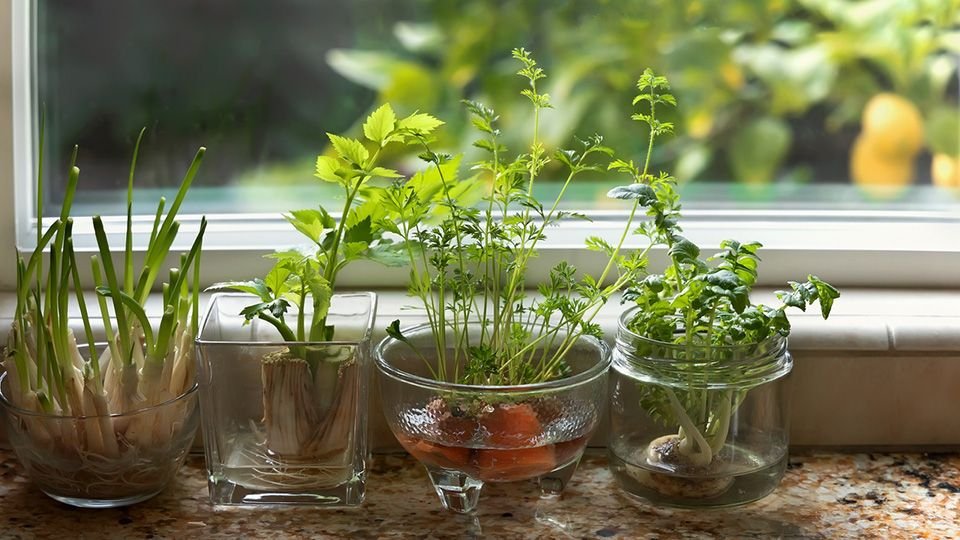
Why They’re a Classic
Potatoes regrow easily from sprouting “eyes,” and can provide an abundant harvest from just one tuber.
How to Regrow:
- Cut a sprouting potato into chunks, ensuring each piece has at least 1-2 eyes.
- Let them dry out for 24–48 hours to prevent rotting.
- Plant them 4 inches deep in soil or a grow bag with eyes facing up.
- Water consistently and hill up soil as plants grow.
In 2–3 months, you’ll be digging up fresh homegrown potatoes.
Tip:
Use organic potatoes to avoid chemical sprout inhibitors.
7. Leeks
Why They’re Similar to Green Onions
Leeks regrow in the same way as green onions—quick, simple, and great for containers.
How to Regrow:
- Cut off the green top, leaving 2 inches of the white base.
- Place the base in a jar with water covering the roots.
- Put in a sunny location and change water every 2 days.
You’ll see new growth in just a few days!
Tip:
Once the green shoot grows a few inches, you can transplant it to soil for a more sustainable harvest.
8. Bok Choy
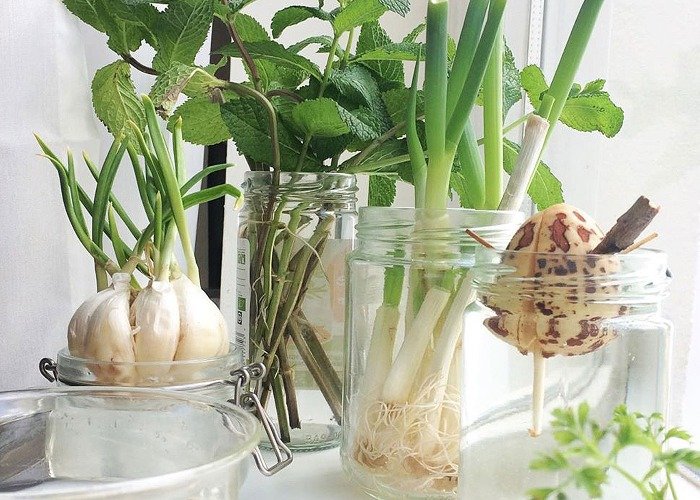
Why It’s a Fast Regrower
This leafy Asian vegetable regrows quickly from the stem base, offering crisp greens in just days.
How to Regrow:
- Cut off the leaves, keeping 1–2 inches of the base.
- Place it in a bowl with water and put it on a sunny windowsill.
- Change the water every other day.
New leaves will sprout from the center within a week.
Tip:
Transplant into soil once roots form for a second full head.
9. Sweet Potatoes
Why They’re Fun to Grow
Sweet potatoes can be regrown from “slips” (shoots that sprout from the root), and each slip can produce a full plant.
How to Regrow:
- Place half a sweet potato in a jar of water, suspended with toothpicks.
- Put the jar in a sunny location.
- In 1–2 weeks, slips will begin to grow from the top.
When the slips are 4–6 inches long, twist them off and root them in water. Then transplant into soil.
Tip:
Sweet potatoes prefer warm soil and full sun—perfect for summer gardens or sunny balconies.
Bonus: Tips for Regrowing Success
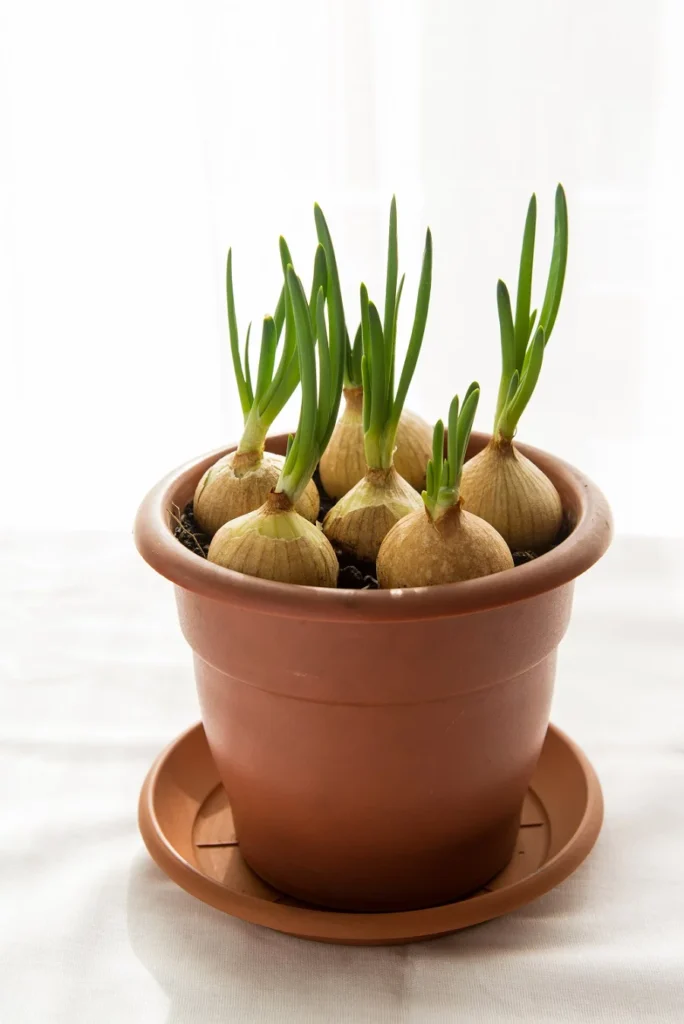
To get the best results when regrowing vegetables from scraps:
- Use filtered water or let tap water sit out overnight to evaporate chlorine.
- Place regrowing vegetables in bright, indirect sunlight.
- Be patient! Some veggies grow fast (green onions), others take longer (sweet potatoes).
- Don’t overcrowd your containers. Give each plant enough space to grow.
- Once roots develop, transfer to soil for stronger, longer-lasting plants.
Final Thoughts: A Garden in Your Kitchen
Regrowing vegetables from scraps is more than just a fun experiment—it’s a smart, sustainable practice that brings fresh food into your life with almost zero cost. It’s a fantastic way to reduce waste, stretch your grocery budget, and build a deeper connection to your food.
Even if you don’t have a backyard or balcony, you can start regrowing right on your kitchen counter. Over time, you’ll find yourself relying less on the store and more on the tiny garden you’ve created from what used to be “waste.”
